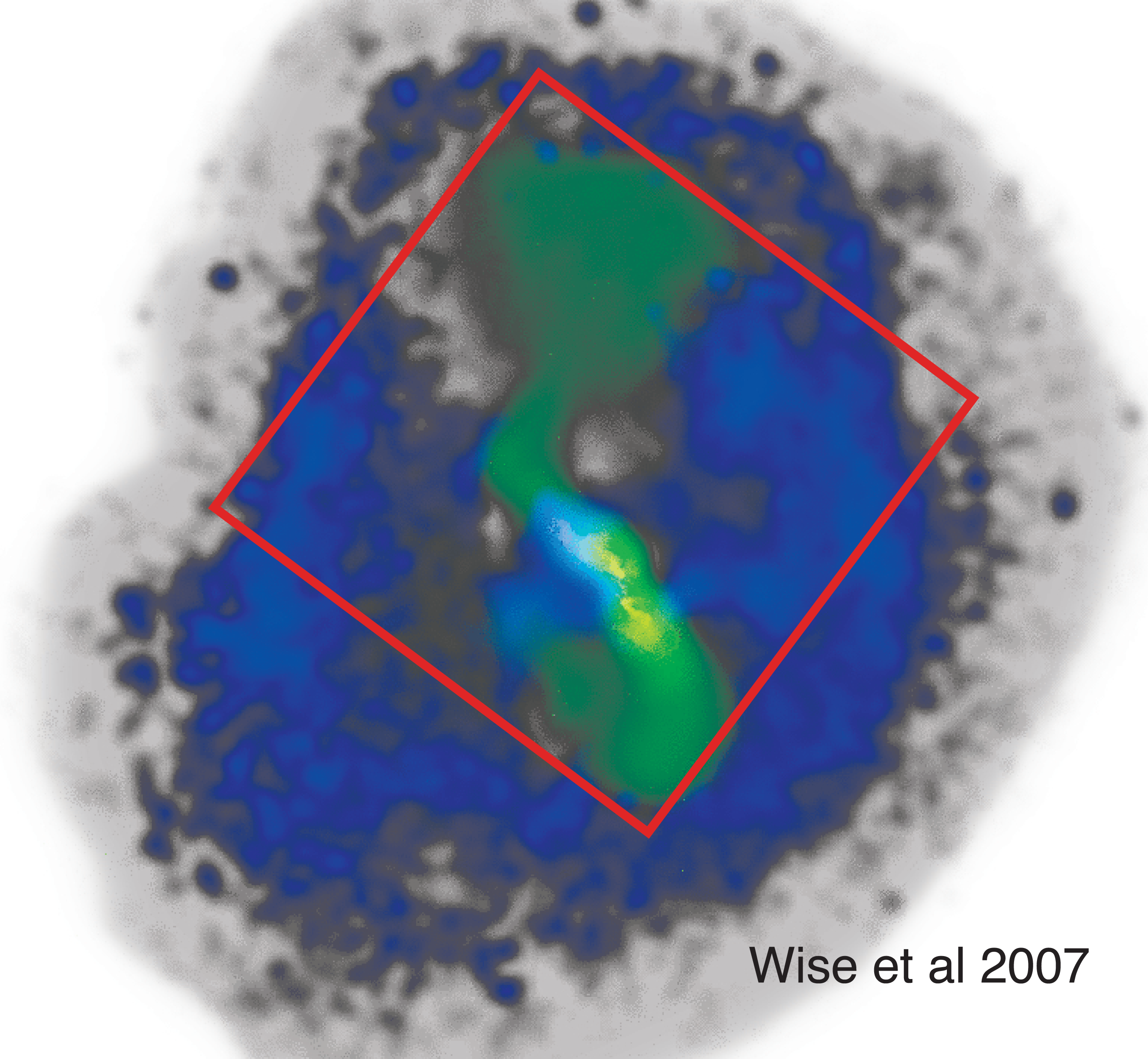 |
Goddard Space
Flight Center NASA > GSFC > Astrophysics Science Division > IXO |
|
Cosmic FeedbackHow does cosmic feedback work and influence galaxy formation? Energetic processes around black holes result in huge radiative and mechanical outputs, which can potentially have a profound effect on their larger-scale environment in galaxies, clusters, and the intergalactic medium. The black hole can heat surrounding gas via its radiative output and drive outflows via radiation pressure. Mechanical power emerging in winds or jets can also provide heating and pressure. The high spectral resolution and imaging capabilities of IXO will provide the necessary diagnostics to distinguish between them. 
Image of the radio galaxy Hydra A at X-rays with Chandra (blue) and radio with the VLA (green). Adapted from Wise et al. (2007). The IXO 5×5arcmin XMS FOV is overlaid in red. IXO will study the jet-medium interaction via non-dispersive spectral/spatial measurements with high spectral resolution to determine the temperature, ionization state, and velocities in the intra-cluster medium. Click the image for a larger view. For outflows that are radiatively accelerated in AGN, X-ray observations will determine the total column density and flow velocity, and hence the kinetic energy flux. IXO will be sensitive to ionization states from Fe I to Fe XXVI over a wide redshift range, allowing the first determination of how feedback affects all phases of interstellar and intergalactic gas, from million-degree collision-ionized plasmas to ten-thousand degree photo-ionized clouds. These measurements will probe over 10 decades in radial scale, from the inner accretion flow where the outflows are generated, to the halos of galaxies and clusters where the outflows deposit their energy. In the centers of many galaxy clusters, the radiative cooling time of the X-ray-emitting gas is much shorter than the age of the system. Despite this, the gas there is still hot. Mechanical power from the central AGN acting through jets is thought to somehow compensate for the energy lost across scales of tens to hundreds of kpc. IXO will map the gas velocity across dozens of galaxy clusters to an accuracy of tens of km/s, revealing how the mechanical energy is spread and dissipated. Selected ReferencesA.M.Bykov, Yu.A.Uvarov, J.B.G.M.Bloemen, J.W. den Herder, J.S.Kaastra, "A Model of Polarized X-ray Emission from Twinkling Synchrotron Supernova Shells", MNRAS (in press), 2009. Download PDF For more information, refer to IXO Astro 2010 Decadal White Papers: Cosmic Feedback from Massive Black Holes, A. Fabian et al. Fundamental Accretion and Ejection Astrophysics, Miller et al. |